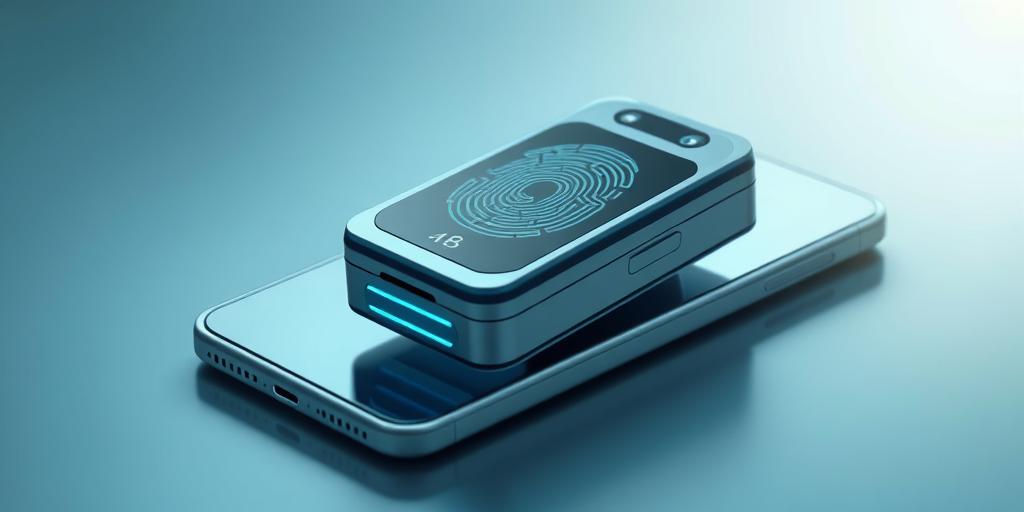Have you ever imagined a world where your fingerprint is your password, where your face unlocks your home, and where your unique heartbeat grants access to sensitive data? This is no longer science fiction; it’s the rapidly evolving world of biometric security. Biometric gadgets are poised to redefine how we secure our lives, our homes, and our data. Prepare to be amazed as we delve into the exciting possibilities and potential impact of these groundbreaking technologies.
The Rise of Biometric Authentication: Beyond Passwords and Pins
The limitations of traditional passwords and PINs are undeniable. They’re easily forgotten, stolen, or cracked. Biometric authentication, on the other hand, leverages your unique biological traits—fingerprints, facial features, iris patterns, voice recognition, and even heartbeats—to provide a layer of security that’s far more difficult to compromise. This shift is transforming various sectors, offering unprecedented levels of security and convenience.
How Biometric Gadgets Work
Biometric gadgets employ sophisticated sensors and algorithms to capture and analyze your unique biological data. This data is then converted into a mathematical representation, a template, that’s stored securely. When you authenticate, the gadget captures your biometric data again and compares it to the stored template. A match grants access; a mismatch triggers a denial. The process is remarkably fast and accurate, making it incredibly user-friendly.
Examples of Biometric Gadgets
Biometric security isn’t just limited to science fiction movies. Many biometric gadgets are already readily available and integrated into our daily lives. Consider the fingerprint sensors on smartphones, facial recognition unlocking on laptops and smart homes, and voice assistants activated by your unique voice patterns. The applications are expanding rapidly, offering seamless security in a wide range of contexts. We are witnessing a technological evolution that will profoundly impact our interaction with technology and secure environments.
Enhanced Security in Various Sectors
The applications of biometric technology are far-reaching and revolutionary, transforming various sectors with enhanced security measures. From healthcare to finance, its versatility is undeniable.
Healthcare: Patient Data Protection
Protecting patient health information (PHI) is paramount in the healthcare sector. Biometric authentication can significantly improve data security by ensuring only authorized personnel can access sensitive patient records. This enhanced security helps prevent medical identity theft, unauthorized access, and data breaches, ultimately protecting patient privacy and confidentiality.
Finance: Secure Transactions
The financial industry is constantly striving for enhanced security to protect transactions and customer data. Biometric authentication is becoming increasingly prevalent in financial applications, from online banking to mobile payments. Biometric security systems provide an added layer of protection against fraud and unauthorized access to bank accounts, offering customers peace of mind.
Law Enforcement and National Security
Biometric authentication has significant applications in law enforcement and national security. Facial recognition systems are used to identify suspects, while fingerprint scanning helps verify identities and track individuals. These technologies play a crucial role in investigations, border security, and counter-terrorism efforts, enhancing national security and public safety. The role of biometrics in enhancing security in these sensitive areas is of paramount importance in the face of rising global threats and the need for effective security protocols.
Challenges and Considerations of Biometric Security
Despite its numerous benefits, biometric security isn’t without its challenges. Several critical factors must be addressed to ensure widespread adoption and prevent potential misuse.
Data Privacy Concerns
The storage and management of biometric data raise critical privacy concerns. Robust security measures are crucial to protect this sensitive information from unauthorized access and misuse. Data breaches could have serious consequences, potentially leading to identity theft and other serious crimes. Therefore, stringent data protection regulations and protocols are essential.
Accuracy and Reliability
While biometric authentication is highly accurate, it’s not foolproof. Factors such as environmental conditions, user behavior, and technological limitations can affect the accuracy and reliability of these systems. It is vital to utilize systems with high accuracy rates and to incorporate additional security measures as safeguards against potential errors and failures.
Accessibility and Equity
The use of biometric technology raises accessibility concerns for individuals with disabilities. Ensuring that biometric authentication systems are inclusive and accessible to all members of society, irrespective of their physical capabilities, is crucial for equitable implementation.
Ethical Implications
The ethical implications of deploying large-scale biometric surveillance systems should not be overlooked. The potential for misuse, discriminatory practices, and erosion of privacy rights raises serious concerns. It is imperative to establish ethical guidelines and regulations to ensure responsible deployment and prevent potential abuses.
This technology is poised to revolutionize security in the coming years. While challenges exist, responsible development and deployment can pave the way for a more secure and convenient future. By embracing these advancements responsibly, we can harness the transformative power of biometrics to build a safer world.




